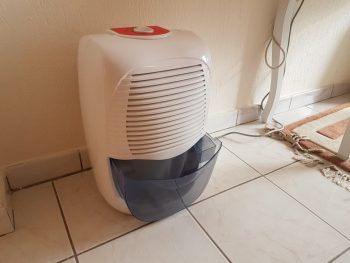
Keeping food fresh in the refrigerator is an art that goes beyond simply stashing your groceries on any available shelf. Proper food storage can help prevent spoilage, save money, and maintain the quality and nutritional value of your food. This comprehensive guide will provide you with detailed tips and techniques to keep your food fresh in the fridge.
To keep food fresh in the fridge, understand your fridge’s different zones and store food appropriately. Use the upper shelves for leftovers and ready-to-eat foods, lower shelves for raw ingredients, and crisper drawers for fruits and vegetables. Store food in airtight containers or wraps to prevent drying and bacterial growth. Avoid overpacking and cross-contamination. Regularly clean and maintain your fridge for optimal performance. Innovative tools like a bread keeper or freshness saver balls can also help prolong food freshness.
Understanding Your Fridge
The first step to keeping food fresh is understanding how your refrigerator works. Different parts of your fridge have different humidity and temperature levels. Generally, the upper shelves have the most consistent temperatures, while the lower shelves are the coldest. The door is the warmest part of the fridge and should be reserved for foods that are less prone to spoilage.
Tip: Use a refrigerator thermometer to ensure the temperature stays between 36-40°F (2-4°C), the optimal range for food preservation.
Proper Food Packaging and Wrapping
Proper food packaging and wrapping play a crucial role in maintaining food freshness. Store food in airtight containers or wraps to prevent drying and bacterial growth. For instance, you can use food-grade plastic wraps, foil, or containers to cover food. Using sealed storage bags or containers can also prevent cross-contamination between different food items.
Remember: Plastic packaging may not necessarily prolong the life of uncut fresh produce. In such cases, storing food at temperatures below 5°C (41°F) can significantly extend shelf life.
Organizing Food Items
Organizing your food items can be a game-changer in maintaining their freshness. Here’s how:
- Upper Shelves: Use for leftovers, drinks, and ready-to-eat foods like yogurt, cheese, and deli meats.
- Lower Shelves: Ideal for raw ingredients, such as meat and poultry.
- Crisper Drawers: These are designed for fruits and vegetables. Adjust humidity settings based on the type of produce.
- Dairy Products: Store at the back of the fridge, where it’s colder.
- Rotation: Regularly reorganize your fridge by moving older items to the front and placing new groceries at the back.
Avoiding Common Mistakes
Avoiding common mistakes can significantly improve food freshness. Here are some to watch out for:
- Cross-contamination: Always store raw meat, fish, or poultry separately from other foods.
- Overpacking: Overpacking can restrict air circulation, leading to inconsistent temperatures and faster spoilage.
- Incorrect Placement: Placing perishable items like eggs and milk in the fridge door can lead to faster spoilage due to temperature fluctuations.
Innovative Techniques
Incorporating innovative techniques can also help keep food fresh. Some of these include:
- Expandable Bread Keeper: This regulates airflow, keeping baked goods fresh.
- Fresh Herb Preserver: This stores fresh herbs with a source of water to retain their flavor and texture.
- Bluapple Produce Freshness Saver Balls: These absorb ethylene gas, helping produce stay fresh.
Fridge Cleaning and Maintenance
Finally, regular fridge cleaning and maintenance can significantly impact food freshness. This includes regular cleaning, maintaining optimal temperature and humidity, checking door seals, monitoring expiration dates, and frequent defrosting.
Keeping your food fresh in the fridge is a combination of understanding your fridge, proper food storage, avoiding common mistakes, and regular cleaning and maintenance. By following these guidelines, you can enjoy fresh and nutritious food for longer and save money by reducing food waste.
Frequently Asked Questions
What is cross-contamination and why is it harmful?
Cross-contamination occurs when harmful bacteria are transferred from one food (usually raw) to another, potentially leading to foodborne illnesses. This is why it’s crucial to store raw meat, fish, or poultry separately from other foods.
What are the ideal humidity settings for fruits and vegetables in my crisper drawers?
Generally, leafy greens and most vegetables do well in high humidity, while fruits prefer low humidity. However, it’s best to check the specific storage recommendations for each type of produce.
What is ethylene gas and why is it important in food storage?
Ethylene gas is a natural hormone released by some fruits and vegetables as they ripen. However, it can also speed up the ripening process of other nearby produce, leading to premature spoilage. Devices like Bluapple Produce Freshness Saver Balls can help absorb this gas and extend the freshness of your produce.
How often should I clean my refrigerator?
It’s recommended to give your fridge a deep clean every 3-4 months. However, if there are spills, odors, or visible dirt, clean the affected area immediately to prevent bacterial growth and cross-contamination.
Why should dairy products be stored at the back of the fridge?
The back of the fridge is typically the coldest part, helping to keep dairy products like milk and cheese at a consistently low temperature to prevent spoilage. The door of the fridge experiences the most temperature fluctuations, which can lead to faster spoilage of these perishable products.












